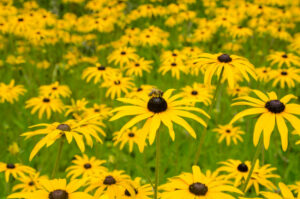The popularity of gardens has been on the rise for many years. People are looking for plants that do not require care, survive in different climates, and tolerate various soil types.
Low-maintenance perennials fit this bill perfectly, as they come back year after year without needing to be replanted. These plants can last more than two years.
These perennial plants can live without much care and they can be attractive additions to any garden. Aside from a little bit of weeding and watering in the early stages of growth, these plants require very little maintenance after the first year or two.
Here are 5 low-maintenance perennials that can add color and texture to your garden.

Coneflower
Coneflowers belong to the daisy family, and their scientific name is echinacea. They are primarily seen in central and eastern North America, growing in moist to wet soils in open woodlands and meadows.
It is a low-maintenance perennial plant that grows from a rhizome. The coneflower has a large, dome-shaped flower head composed of hundreds of small, individual flowers.
Their height ranges from approximately 12 to 60 inches, and they spread around 10 to 25 inches wide. Cornflowers have different flower colors like orange, pink, and yellow, but the most common color is purple.
Echinacea is taken to boost the immune system. The flowers usually bloom from June to September or later. People use them as food, medicine, and dye.
Black-Eyed Susan

Black-eyed Susan also belongs to the daisy family, and its scientific name is rudbeckia hirta. It is a North American wildflower that you can find in the east of the Rocky Mountains.
It has bright yellow petals and a dark brown center. This plant can grow as high as 11 to 40 inches and spread out as wide as 12 to 19 inches.
They are sturdy, long-lived, low-maintenance perennial plants that thrive in full sun and poor soil, making them easy to grow.
They attract butterflies and bloom from June to September. Its medical uses include preventing flu, earaches, and treating ulcers.

Fall Aster
The asteraceae family of plants is a large one, with over 23,000 different species. One plant found in this family is the fall aster having the scientific name Symphyotrichum Oblongifolium.
Fall aster is a herbaceous perennial that blooms in the fall months from August to October or later. They are native to Northern and Eastern America as they can be found in fields, meadows, and open woods.
Aster is a Greek word for star, as the flowers are star-shaped. There are many types of asters, and they come in colors, including white, blue, lavender, purple, and pink.
Their height varies from species to species but on average, their height ranges between 10 to 55 inches, and they usually spread around 11 to 35 inches wide.
Iris

The Iris plant comes from the family of iridceae, as it is one of the most popular low-maintenance perennials grown in home gardens across different states of America.
This plant derives its name from the Greek word for rainbow, and there are more than 200 species of iris plants available in various colors, including purple, yellow, blue, pink, and white.
They like to grow in sunny areas with well-drained soil. Iris plants can be used as border plants or in rock gardens. Irises prefer full sun but can also tolerate light shade.
It can grow an approximate height ranging from 10 to 40 inches and spread around 8 to 25 inches wide. There are six lobes of the iris where the outer three lobes are known as sepals and the inner three as petals.

Salvia Sage
Perennial salvia sage is an evergreen culinary and medicinal herb native to the Mediterranean that belongs to the family of mint. The leaves make a refreshing tea, which may help relieve bloating, indigestion, and menstrual cramps.
The genus name salvia is derived from the latin word salvere meaning ‘to be saved or healed.’ It can grow 10 to 70 inches tall and spread 20 to 40 inches wide.
Their scientific name is salvia officinalis, and they usually bloom in late spring to early summer. Romans used this plant to enhance their memory and to preserve meat.
Conclusion
The list mentioned above of low-maintenance perennial plants is a great way to add some color to your yard without spending much time or money on upkeep.
When you choose plants that do not require much care, you can reduce your time on gardening. But you should remember that even low-maintenance plants need to be watered and fertilized occasionally.
